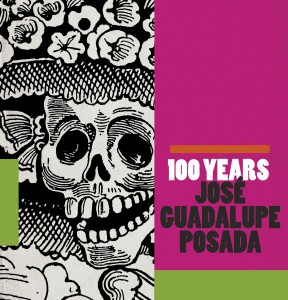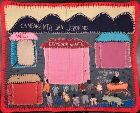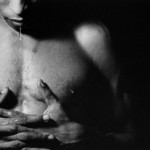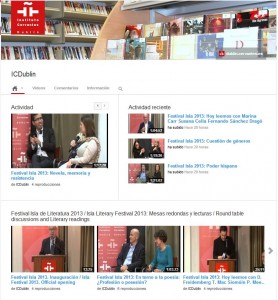Blog del Instituto Cervantes de Dublín
Torre Martello
Exhibition | Exposición: José Guadalupe Posada. 100 years
 We invite you to enjoy today the official opening of a new exhibition organized by the Embassy of Mexico in Ireland: José Guadalupe Posada. 100 years. The event will be today at 7pm in the Exhibition Room. You can enjoy this fantastic work until July 4th.
We invite you to enjoy today the official opening of a new exhibition organized by the Embassy of Mexico in Ireland: José Guadalupe Posada. 100 years. The event will be today at 7pm in the Exhibition Room. You can enjoy this fantastic work until July 4th.
José Guadalupe Posada (1852-1913) is one of Mexico’s maximum exponents in universal plastic. His work has positioned itself in the collective imagination as synonymous with Mexican culture. It is just enough to mention one of his masterworks, the Calavera Catrina, as the benchmark of the ancestral celebration of the Day of the Dead, recognized and admired internationally.
A hundred years after the death of Posada, the exhibition covers the last decade of the Nineteenth Century and the first of the Twentieth, a period in which Posada consolidated what history set out as theorigin of Mexican popular graphic, and influenced decisively in various forms of art that resulted in the so-called nationalist movement, just after the Mexican Revolution.
This exhibition features over one hundred original pieces grouped into three themes: Daily Life, Disasters and Calaveras. The exhibition, presented in Dublin by the Embassy of Mexico in Ireland and the Cervantes Institute in collaboration with the Government of Aguascalientes, has been integrated by the Mexican National Institute of Fine Arts (INBA), the National Council for Culture and the Arts (CONACULTA), the Cultural Institute of Aguascalientes, México (ICA) and the José Guadalupe Posada Museum.
Opening hours: Mon-Thu: 3-7pm, Sat: 10am-2pm
Hoy estás invitado a asistir a la inauguración oficial de nuestra nueva exposición: José Guadalupe Posada. Cien años, organizada por la Embajada de México en Irlanda. Te esperamos hoy a las 19:00 en la Sala de Exposiciones. Tendrás la oportunidad de disfrutar de este fantástico trabajo hasta el 4 de julio.
José Guadalupe Posada (Aguascalientes, México, 1852 – Ciudad de México, 1913) en su época fue un modesto artesano ilustrador de impresos. Con el paso de los años su aportación resultó tan significativa que actualmente es el artista que mayor influencia tiene en la mayoría de los grabadores mexicanos del siglo XX. La vigencia de su obra continúa hasta nuestros días en el arte popular y seguramente su legado permanecerá por muchos años como ejemplo para artistas y diseñadores gráficos. Buena parte de sus creaciones se han convertido en iconos de la cultura mexicana. A nivel internacional cualquiera de sus estampas representa orgullosamente la identidad del pueblo mexicano.
Horario: Lunes a jueves de 15:00-19:00, Sabado: 10:00-14:00
Exposición: Arpilleras poéticas | Exhibition: Poetic Arpilleras
 Mañana, día 22, inauguramos nueva exposición gracias a la colaboración de la Embajada de Chile en Irlanda y la Dirección de Asuntos Culturales del Ministerio de Relaciones Exteriores de Chile, los verdaderos motores de esta iniciativa.
Mañana, día 22, inauguramos nueva exposición gracias a la colaboración de la Embajada de Chile en Irlanda y la Dirección de Asuntos Culturales del Ministerio de Relaciones Exteriores de Chile, los verdaderos motores de esta iniciativa.
Arpilleras Poéticas comisariada por la académica y curadora chilena residente en Irlanda del Norte, Roberta Bacic, reúne alrededor de 30 arpilleras chilenas (técnica consistente en la utilización de piezas textiles gruesas y ásperas sobre cuya superficie se realizan trabajos de artesanía y bordado) de diversos tamaños que relatan la historia, la sociedad y la cultura del Chile reciente.
Roberta Bacic a lo largo de los años ha reunido una gran colección de dichas valiosas piezas, dedicándose desde comienzos del año 2000 a su recuperación, conservación y estudio. Ha expuesto a partir del 2008 en Nueva York, Hamburgo, Sao Paulo, Belfast, Barcelona, Berlín, Osaka, Kingston, Londres entre otras muchas ciudades y ahora en Dublín el público tendrá la oportunidad de disfrutar de este arte textil chileno que habla de las vicisitudes del hombre y la memoria.
Puedes visitar la exposición durante el siguiente horario:
Lunes a jueves: 2-7pm. Sábados: 10am a 2pm. Cerrados los viernes, domingos y Bank holidays.
From November 22th to December 15th, the Cervantes Institute, the Embassy of Chile in Ireland and the Cultural Affairs Committee of the Ministry of Foreign Affairs of Chile have the honour to invite you and your family to enjoy the Poetic Arpilleras exhibition of the Chilean academic and curator resident in Northern Ireland, Roberta Bacic. The exhibition will open at 6pm on November 22nd with the curator Roberta Bacic and a poetry recital by Chilean poet Jaime Huenún.
The exhibition “Poetic Arpilleras” gathers around 30 Chilean “arpilleras” (the technique consists scraps of materials hand sewn and appliqued onto burlap. Often arpillera dolls are used to add the three dimensional perspective. Wool is used to sew around the piece, either with a needle or crochet, to give it the shape of a picture to be hung on a wall) of various sizes. These tell about the history, society and culture of contemporary Chile.
Roberta Bacic has gathered throughout many years a vast collection of these valuable pieces devoting time to acquire, recover, conserve and study them since the early 2000’s. She has exhibited from 2008 in New York, Hamburg, Sao Paulo, Belfast, Barcelona, Berlin, Osaka, Kingston and London among many other cities. Now in Dublin, the general public will have the opportunity to enjoy this Chilean textile art which tells the story of human experience and memory.
The exhibition is open during these times:
Mon-Thurs.: 2-7 pm. Sat: 10 am-2 pm h.
Closed Frid., Sun. and Bank holidays
[Video] Cecilia Gandarias habla sobre la exposición «Geografía Postal»
En la primera mitad del siglo XX, las familias García Lorca y De los Ríos se enviaban postales casi todos los días, creando así una amplísima colección que ahora se expone en el Instituto Cervantes. Cecilia Gandarias, comisaria de la exposición, nos habla de cómo surgió la idea para esta exposición y de como se realizó la selección de las postales.
La exposición estará abierta del 20/09/2012 al 17/11/2012.
El horario de visita es: Lun.- jue.: 14-19 h. Sáb: 10-14 h. Cerrado vie., dom. y festivos
In the first half of the 20th Century two families, García Lorca and De los Ríos, sent each other postcards almost daily. A selection of this huge collection of postcards is now on display at the Instituto Cervantes in Dublin. Cecilia Gandarias, exhibition curator, explains us in this video how they came to the idea of organizing this exhibition and how Martin Parr, photographer and specialist in postcards, made the selection.
This display will bring us closer to the most intimate side of the poet´s life.
The exhibition is open fro the 20/09/2012 to 17/11/2012.
Opening hours: Mon-Thur: 2-7pm. Sat: 10am-2pm. Closed on Fridays, Saturdays and Bank Holidays.
New Exhibition | Nueva exposición: El otro lado del alma
 Por tercer año consecutivo, el Instituto Cervantes de Dublín participa en el Festival PhotoIreland. La edición 2012 lleva por título Migrations: Diaspora & Cultural Identity (Migraciones: Diáspora & Identidad cultural). Dentro de esta temática presentamos la exposición El otro lado del alma.
Por tercer año consecutivo, el Instituto Cervantes de Dublín participa en el Festival PhotoIreland. La edición 2012 lleva por título Migrations: Diaspora & Cultural Identity (Migraciones: Diáspora & Identidad cultural). Dentro de esta temática presentamos la exposición El otro lado del alma.
En El otro lado del alma nos encontramos con una serie de fotógrafos contemporáneos cubanos que investigan la temática religiosa y en concreto las religiones sincretistas con raíces en los cultos africanos importadas a la isla hace cientos de años por esclavos, desde muy diferentes perspectivas, mostrando una interpretación individual sobre la memoria espiritual colectiva de la nación.
Aunque la fotografía y el videoarte cubano actual se mueven en la esfera de los movimientos internacionales, mucho de los artistas cubanos siguen mostrando en sus fotografías y en sus vídeos que la tradición cubana sigue estando profundamente arraigada en ellos. Así, en muchas de las obras que se producen actualmente podemos apreciar la influencia de una profunda temática cubana.
La exposición estará abierta del 05/07/2012 al 31/08/2012.
El horario de visita es de lunes a jueves entre las 14:00 y las 19:00. Los viernes de 10:00 a 14:00. Cierra los sábados, domingos y bank holidays.
For the third consecutive year, Instituto Cervantes Dublin takes part in PhotoIreland Festival. The 2012 edition’s title is “Migrations: Diaspora & Cultural identity”.
In this context we introduce El otro lado del alma (The other side of the soul). This exhibition showcases various contemporary Cuban photographers who research religious themes and, specifically, syncretistic religions with roots in African cults that were imported in the island centuries ago by slaves. These photographers portray a personal interpretation of the collective spiritual memory of the nation from very different perspectives.
Although both Cuban photography and video art revolve around international movements, many Cuban artists still portray an ingrained Cuban tradition. We can therefore perceive a profound Cuban theme influence in many works produced at present.
The exhibition will be open from July 5th to 31st August 2012.
The visiting hours are Mon-Thu.: 2-7pm. Fri: 10am-2pm. Closed Sat, Sun, bank holidays
Desigñ. Diseño con acento español / Spanish accent in design
 El Instituto Cervantes de Dublín inauguró, el martes 21 de Febrero, la exposición Desigñ: Spanish Accent in Design con una charla de presentación sobre diseño y sostenibilidad seguida de una degustación de vino español.
El Instituto Cervantes de Dublín inauguró, el martes 21 de Febrero, la exposición Desigñ: Spanish Accent in Design con una charla de presentación sobre diseño y sostenibilidad seguida de una degustación de vino español.
La exposición está compuesta por 70 carteles originales que dan buena fe del excelente momento creativo por el que pasa el diseño español. Estas obras han sido minuciosamente escogidas entre trabajos de prestigiosas marcas como Camper o Munich y aclamados diseñadores como Manolo Blahnik o Patricia Urquiola.
La presentación tuvo su momento álgido con la intervención de Carolina Blázquez, Directora Creativa de la empresa española ECOALF, dedicada al diseño de ropa urbana y accesorios que combina innovación tecnológica con reciclaje y sostenibilidad.
Carolina mostró al sorprendido público un interesante chaleco fabricado a partir de redes de pesca recicladas: “Fabricamos un metro de hilo reciclado por cada 135 gramos de redes de pesca desechadas que de otra modo acabarían siendo arrojadas al mar. Este es un buen ejemplo de nuestra política de sostenibilidad que combina diseño y reciclaje,” decía Carolina con evidente satisfacción.
No menos interesante fue la presentación ofrecida por Kate Cronin, representante de la empresa de diseño irlandesa Klickity, que mostró a la ya cautivada audiencia las ventajas de un diseño que innova a la vez que respeta el medio ambiente: “Creemos firmemente en enfoque alternativo del diseño capaz de combinar novedad, creatividad y sostenibilidad en todos nuestros productos,” dijo Kate.
Rosa León, Directora del Instituto, subrayó la importancia de ésta exposición a la vez que se mostró orgullosa de que el Instituto de Dublin sea el primer centro en ofrecer esta muestra fuera de España. “Desigñ llega al Instituto Cervantes de Dublín con el objetivo de poner en valor el diseño español,” explicó Rosa.
Esta exposición gratuita estará abierta al público hasta el 28 de Abril en la sala de exposiciones del Instituto Cervantes de Dublín situado en Lincoln House, Dublin 2.
El Instituto Cervantes también ofrece una amplia oferta de cursos de lengua española así como un variado programa de actividades culturales con el objeto de difundir la cultura y costumbres de España e Hispanoamérica.
Instituto Cervantes Dublín inaugurated, last Tuesday 21st of February, the exhibition Desigñ: Spanish Accent in Design with an opening talk about innovation and recycling followed by a Spanish wine tasting.
The exhibition comprises 70 original posters of various disciplines which illustrates why the accent is on Spanish design at present. Selected works includes projects alongside some internationally recognised Spanish creations and brand names such as Camper and Munich or designers such as Manolo Blahnik, and Patricia Urquiola.
Much attention was given to the intervention of Carolina Blázquez, member of ECOALF, a Spanish company which designs clothes and accessories using recycled materials. She showed to the amazed audience a waistcoat made by recycled fishing nets. “We make one meter of recycled thread out of 135 grams of fishing nets that otherwise would be thrown into the ocean. This is just one example of our policy of combining design, recycling and sustainability.” Blázquez said.
Kate Cronin, representative of Klickity, an Irish contemporary design company, talked about the advantages of innovative design bearing the environment in mind: “We believe in a holistic approach to design and strive to balance creativity, innovation and sustainability in all our work,” said Cronin.
Rosa León, the Director of the institute, emphasised that Instituto Cervantes Dublín is the first centre to launch this exhibition outside Spain. “Desigñ arrives at Dublin with the objective of giving Spanish design its rightful place,” she said.
Desigñ Exhibition will be on show for free until 28th of April in the exhibitions venue of the Instituto Cervantes Dublín located at Lincoln House in Dublin 2.
Besides this exhibition, Instituto Cervantes also offers a wide range of cultural activities and language courses to promote and spread the Spanish language and Spanish and Hispanic-American culture.
Inauguramos exposición / Opening exhibition: “A la mesa! Diseño y comida”
 No pierdas la oportunidad de visitar una exposición para saborear con la vista: ¡A la mesa! Diseño y comida.
No pierdas la oportunidad de visitar una exposición para saborear con la vista: ¡A la mesa! Diseño y comida.
Se trata de una muestra que cubre tres ámbitos: Comprar, Preparar y Servir, y que reflexiona sobre el momento que atraviesa la cocina española y la infinidad de productos creativos que hacen de ella una sofisticada actividad.
Abierta al público hasta el 21 de enero de 2012.
Do not miss this new exhibition to be savoured with the eyes: At the table! Design and food.
Covering three subjects, Shopping, Preparing and Serving, this display reflects on the current situation of Spanish food and the high number of creative products that turn it into a sophisticated activity.
Open to the public until January 21st 2012.
¡A la mesa! / At the table!
La cocina de un país es un gran libro abierto del que nos llegan aromas de historia, de geografía, de la relación de un pueblo con la tierra, de su clima, de sus intercambios culturales, de las costumbres de las familias alrededor de la mesa.
Durante los próximos meses, el Instituto Cervantes te invita a degustar el más selecto menú para las tardes otoñales:
Bebidas
A través de los seminarios de ¡Oído, cocina! podrás recorrer la gastronomía hispana desde España hasta México, incluyendo dos charlas-degustación sobre dos míticas bebidas mexicanas: el tequila y el mezcal.
Primer plato
“El sabor de las palabras” da título al ciclo de conferencias que durante noviembre y diciembre explorarán la estrecha relación entre literatura y cocina que han convertido a ésta última en una fuente de inspiración para numerosos autores.
Segundo plato
El día 1o de noviembre se inaugura la exposición “¡A la mesa! diseño y comida“, una reflexión sobre la evolución de las tendencias culinarias en España a través del diseño.
Postres
Los postres nos llevan al Café Literario, donde los cinco títulos proyectados en el ciclo “Cine y gastronomía” retratan el mundo de los fogones en la gran pantalla, ya sea en forma de documental, despertando unas carcajadas o haciéndonos llorar.
Por todo ello, desde la biblioteca te invitamos este mes a hacer una lectura de España a través de su gastronomía. Ponte el delantal y acércate a nuestra sección de cocina. Deja que tu paladar se sorprenda de la riqueza de la cocina española en la diversidad de sus regiones. Y sobre todo, atrévete a compartir la mesa con nosotros contándonos tus impresiones y cómo no, el éxito de tus platos, en nuestro blog. ¡Buen provecho!
Drinks
Throughout the seminars “May I have your order?” you will make a journey along the Hispanic gastronomy, fromSpain toMexico, including two talk/tastings where you’ll have the possibility to try two traditional Mexican drinks: tequila and mezcal.
Starters
“The taste of words” is the title of the series of talks to be held during November and December with the aim to explore the close relationship between literature and gastronomy, the last becoming an inspiration source to many authors.
Main course
The 10th of November we have the opening of the exhibition “At the table! Design and food“, a reflection on the evolution of culinary trends in Spain…
Desserts
Desserts will bring us to the Café Literario, where the five films included in the series “Cinema and gastronomy” will display the world inside the kitchen on the big screen, making us laugh or cry.
For all these reasons, the library invites you this month to take a view of Spain through the prism of its cuisine. Put on your apron and get close to our cuisine section. Let your palate get amazed with the richness and diversity of Spanish cuisine throughout its regions. And please, dare to share the table with us with comments about your impressions and the success of your dishes in our blog. Enjoy your meal!
Reportaje fotográfico: “sobre el valioso trabajo artístico y documental de Marín” en elpaís.com
El País recorre el “valioso trabajo artístico y documental de Marín” en su reportaje fotográfico “Las fotos del quién sabe dónde”, publicado en la versión digital de ayer.
Ven a descubrir la obra de este gran fotorreportero madrileño en nuestra exposición:
Marín. Fotografías 1908-1940
Fechas: Del 07/07/2011 al 23/09/2011
Horario de visita: lunes a jueves: 14h-19h. viérnes 10h-14h. Cerrado festivos.
Lugar:
Instituto Cervantes – Sala de Exposiciones
Lincoln House, Lincoln Place
Dublin 2
Photographic report: “on the invaluable artistic and documentary work of Marín”
El País explores the invaluable artistic and documentary work of Marín in its photographic report “Las fotos del quién sabe dónde”, published yesterday on its on-line edition.
Come and discover the work of this great photojournalist from Madrid in our exhibition of his work:
Marín. Photographs 1908-1940
Dates: 07/07/2011 – 23/09/2011
Opening Hours: Monday to Thursday: 2-7 pm. Fridays: 10am-2 pm. Closed on Bank Holidays.
Location:
Instituto Cervantes – Exhibition Room
Lincoln House, Lincoln Place
Dublin 2
Exposición fotográfica / Photo Exhibition: Marín 1908 – 1940
 Exposición fotográfica / Photography Exhibition
Exposición fotográfica / Photography Exhibition
Hoy / Today 07/07/2011 6:00 pm.
Instituto Cervantes
Lincoln House, Lincoln Place
Dublin 2
El arte contemporáneo en Irlanda habla español / Contemporary art in Ireland speaks Spanish
 Dublin Contemporary 2011 presentó el pasado 3 de febrero a Christian Viveros-Fauné y Jota Castro como nuevos curadores de esta gran exposición de artes visuales.
Dublin Contemporary 2011 presentó el pasado 3 de febrero a Christian Viveros-Fauné y Jota Castro como nuevos curadores de esta gran exposición de artes visuales.
Christian Viveros-Fauné, curador y escritor chileno basado en Nueva York, y el artista y curador franco-peruano, Jota Castro, se suman así a otro nombre hispano en el panorama del arte contemporáneo en Irlanda, Enrique Juncosa, director del IMMA (Irish Museum of Modern Art)
Sobre Christian Viveros-Fauné y Jota Castro en artealdía.com
Sobre Enrique Juncosa en modernart.ie
Página de Dublin Contemporary 2011
The 3rd February, Dublin Contemporary 2011 introduced Christian Viveros-Fauné and Jota Castro as the new curators of this major exhibition of visual arts.
Christian Viveros-Fauné, Chilean curator and writer based in New York, along with Franco-Peruvian artist and curator, Jota Castro, join another Spanish name in the panorama of contemporary arts in Ireland, Enrique Juncosa, director of IMMA (the Irish Museum of Modern Art)
About Christian Viveros-Fauné y Jota Castro
Two Worlds: an exhibition of new works by Jordi Forniés
Jordi Forniés, born in Huesca in 1971 is a Catalan artist based in Dublin (Ireland).
A chemist by training, Jordi knows a thing or two about pigments and paint.
His experience in this area combined with a very strong interest in the mineral world has lead Jordi to reinvent or re-interpret the complex yet beautiful landscapes within and without, mixing traditional and cutting edge design techniques.
Sculpting external material into the canvas before blending colours as time would in rock formations, the artist invites us on a journey through the inner self, exploring the geology of the mind, the meandering of distant memories, the erosion of emotions, the passing of love.
Opening on Wednesday November 17 at 7 pm
Smock Alley Theatre.
Girls School.
Essex Street West.
Temple Bar. Dublin 8







